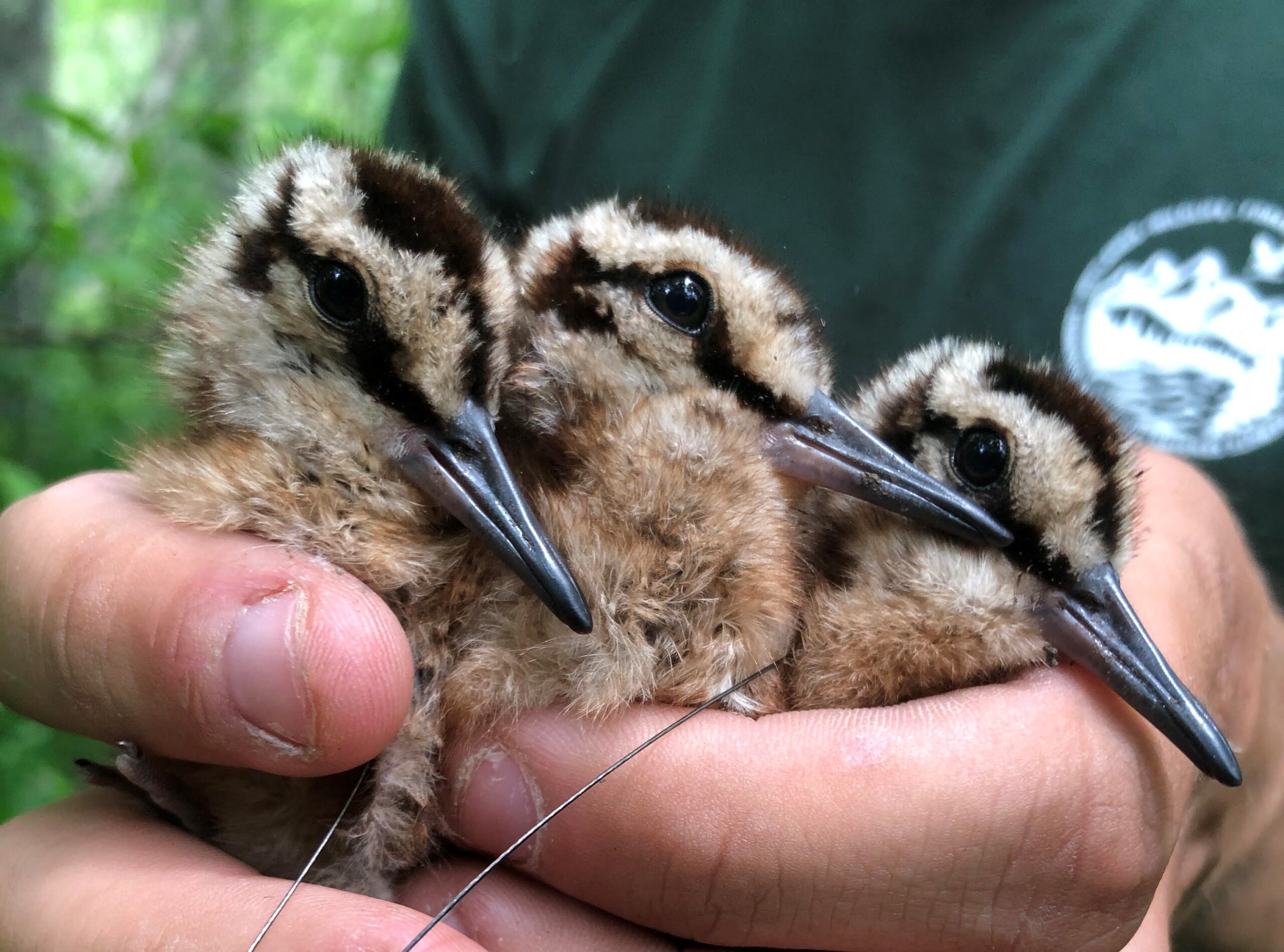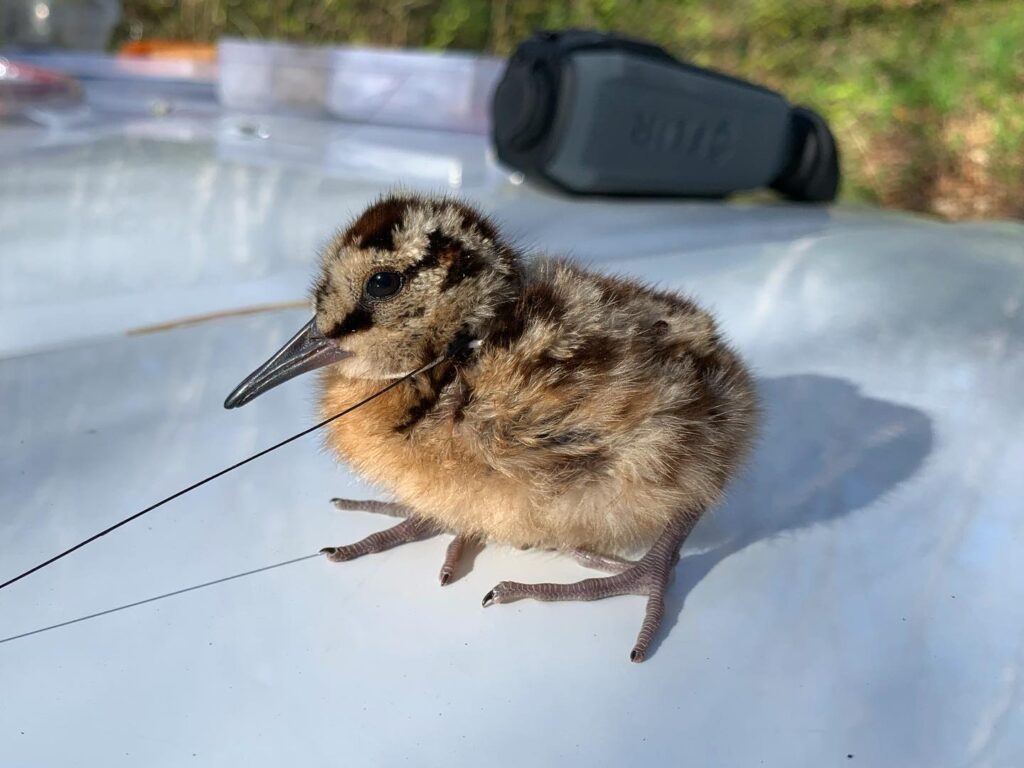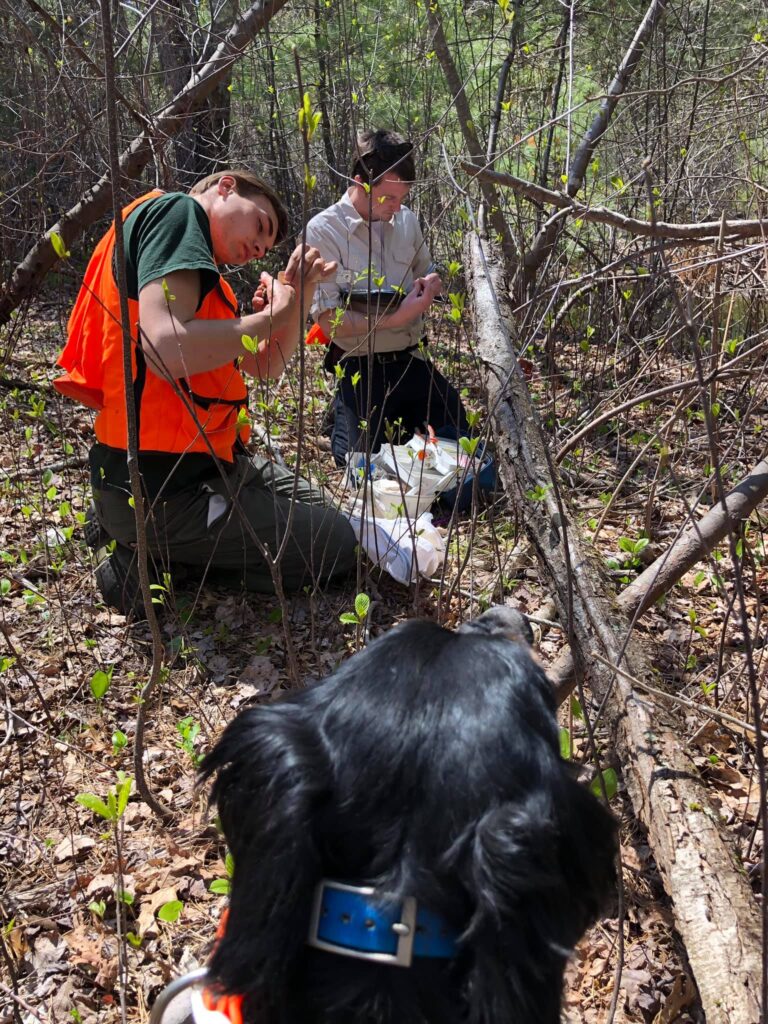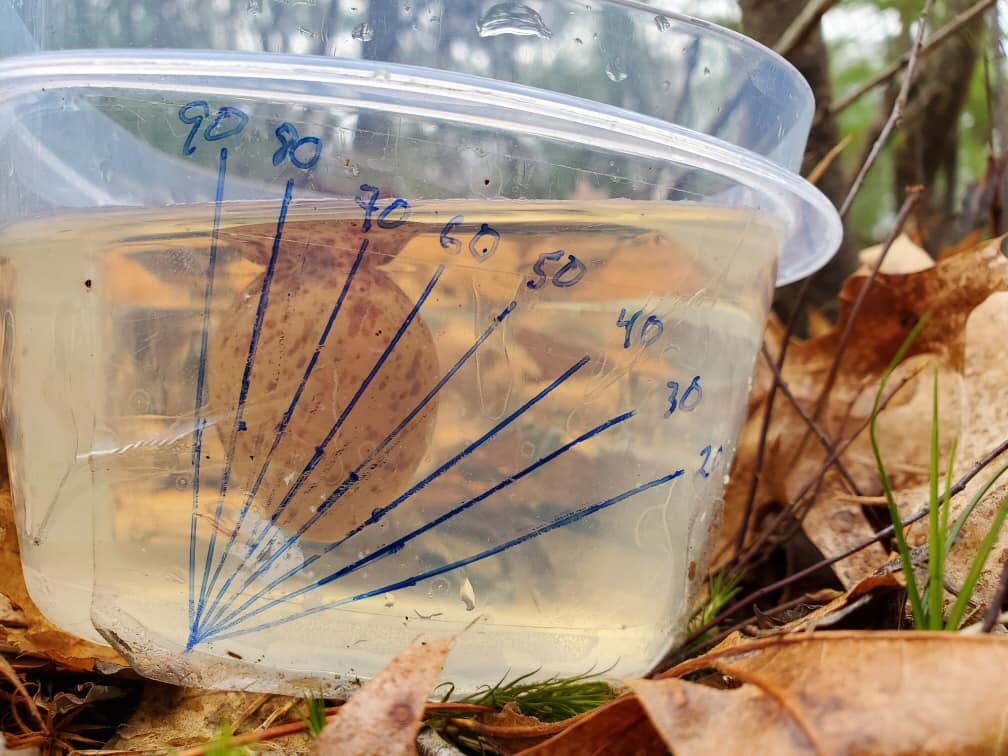by Colby R. Slezak
Related paper: Mismatch between strong nest site selection and low survival of nests and broods for Scolopax minor (American Woodcock) and its implications for conservation by Colby R. Slezak, Ian M. Delmonico, Jennifer E. Kilburn, and Scott R. McWilliams, Ornithological Applications
For more than a decade, our team has focused on studying male Scolopax minor (American Woodcock) in Rhode Island. During this time, we recognized a significant gap in knowledge about female S. minor, particularly regarding nest site selection and brood survival, due to a lack of data from this region. Unlike the northern states of Maine, Michigan, Minnesota, and Wisconsin, Rhode Island has never surveyed using pointing dogs, which typically provide useful data on survival estimates for woodcock nests and broods, highlighting the need for peer-reviewed literature to support effective management practices.
The Need for Research
Our latest research aimed to address this knowledge gap. We explored how female S. minor select nest sites at two spatial scales— at the scale of the female home range (78.7 ± 46.4 ha) or 15-m radius plot around the nest to study nest visual concealment. Our study, “Mismatch between strong nest site selection and low survival of nests and broods for Scolopax minor (American Woodcock) and its implications for conservation,” examines the contradictory relationship between preferred nesting habitats and the actual survival rates of nests and broods. To support our research, we contacted woodcock hunters through the Harvest Information Program, which resulted in participation from handlers of about 15 pointing dogs, including Brittany Spaniels and German Shorthaired Pointers. These handlers are not only experts in working with their dogs but also demonstrate a strong commitment to woodcock conservation. We gained valuable insights from their experiences during our time in the field together.
In our previous research, we concentrated on habitat selection in Rhode Island. More recently, we used our decade-long dataset on males to assess habitat selection and incorporated data on habitat selection by females using birds captured as part of this study, which serves as a companion to the research described here. These findings appeared in our paper,“Sex-specific differences and long-term trends in habitat selection of American Woodcock,” published in the Journal of Wildlife Management in 2024.
Key Findings
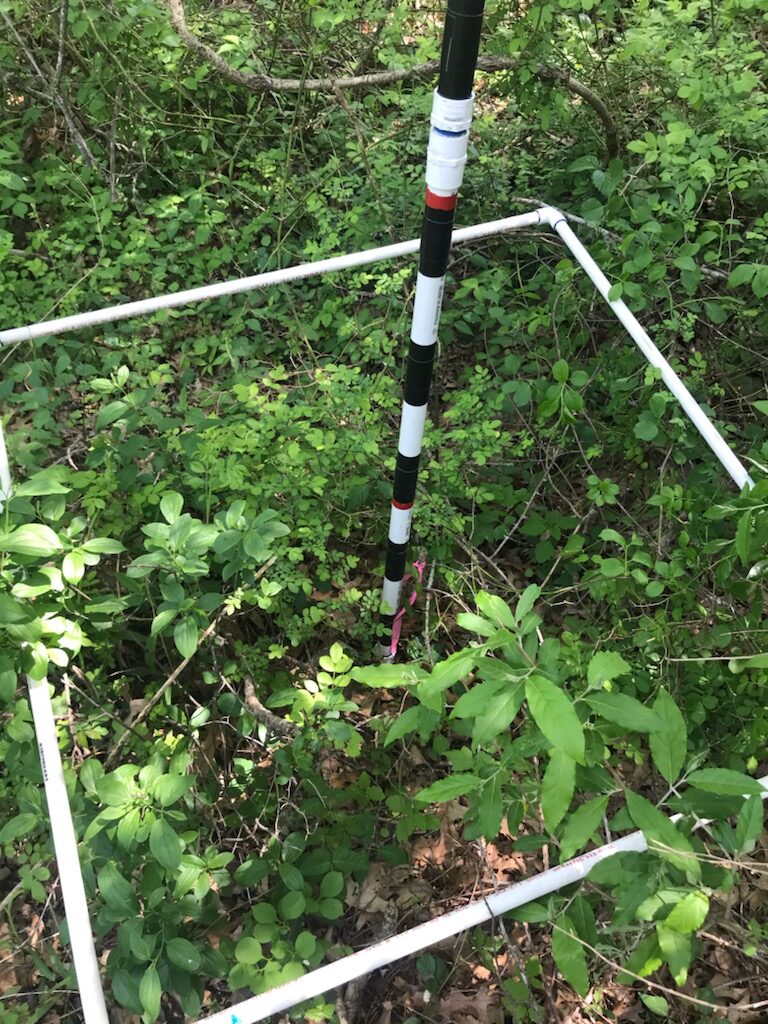
Our most recent study revealed that female S. minor prefer to nest in a variety of early successional cover types, highlighting the need to maintain diverse habitats. Directly surrounding the nest, we found that females select sites with taller surrounding vegetation and higher amounts of herbaceous and canopy cover. These findings emphasize the importance of creating and maintaining habitats that support early successional cover types.
However, despite selecting seemingly suitable nest sites, we observed low nest and brood survival rates. Interestingly, these survival rates did not significantly vary with weather or habitat conditions, suggesting that in fragmented landscapes increased predation pressures pose a serious challenge to woodcock populations.
Recommendations for Habitat Management
Based on our findings, we recommend that habitat management strategies should create softer edges. This approach could include developing undulating boundaries or selectively removing trees at junctions to improve nest concealment and reduce vulnerability to predators. Our study underscores the need for wildlife managers and conservationists to prioritize habitat management for S. minor across its breeding range. Addressing these challenges is crucial for mitigating threats and reversing long-term population declines.
Our research aims to enhance management practices for S. minor in Rhode Island and beyond. By understanding nest site selection and the factors affecting survival, we hope to contribute to more effective conservation strategies that support healthy woodcock populations in the future. Our collaboration with dedicated dog handlers has deepened our understanding of the species and highlighted the important role of conservationists in protecting woodcock populations.For more information on research in Dr. Scott McWilliams’ lab at the University of Rhode Island, please visit Scott R. McWilliams’ Lab.
